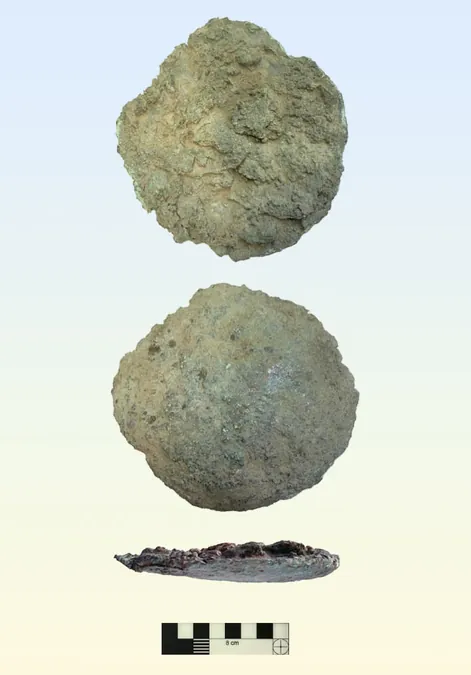
Unveiling Secrets of the Iron Age: Rare Artifact Discovered in Sweden Links Atlantic and Baltic Trade
2025-09-16
Author: Yu
In a groundbreaking discovery, archaeologists have unearthed a remarkable artifact in Särdal, Sweden, revealing crucial insights into the trading practices of the Iron Age. Initially mistaken for a Bronze Age object, the heavy, round metal ingot was found during excavations in autumn 2022.
The Discovery: A Unique Artifact in Sweden
This captivating find—the first plano-convex ingot of its kind in Sweden—measures 14-15.3 cm in diameter, about 2.5 cm thick, and weighs in at a hefty 1,223.5 grams. Characterized by its round shape with a flat top and a bulging underside, this artifact showcases a distinct copper-zinc-tin-lead alloy, marking its origin in the Iron Age.
Why This Ingot Matters
Professor Serena Sabatini from the University of Gothenburg explained the significance of plano-convex ingots, often dubbed 'bun ingots' or 'casting cakes.' These artifacts, commonplace during the Bronze and Iron Ages, are indicative of ancient metallurgical practices. Crafted by pouring molten metal into molds, their surfaces often bear distinctive 'bubbly' textures that tell a story of ancient casting methods.
A Twist in Time: Misleading First Impressions
At first, researchers presumed the Särdal ingot belonged to the earlier Bronze Age due to its size and shape. However, without a solid archaeological context for dating, they employed advanced isotopic and chemical analyses, leading to a surprising revelation: the ingot’s composition firmly aligns with Iron Age materials.
Connecting Trade Routes: A Maritime Exchange
Further examination revealed striking similarities between this ingot and artifacts from hoards in the Iława Lakeland region of Poland. Historical studies suggest that there was an intense network of trade between the Baltic and West Sweden during the pre-Roman Iron Age, indicating that this ingot likely played a role in maritime metal trade connecting Scandinavia with the Iberian Peninsula.
Looking Ahead: What’s Next?
The findings from this research, set to be published in the October 2025 issue of the Journal of Archaeological Science: Reports, provide a thrilling glimpse into ancient trade practices that shaped the economies and cultures of Northern Europe long ago. This discovery redefines our understanding of metal exchange in ancient times and opens new avenues for exploration in the mysterious Iron Age.




 Brasil (PT)
Brasil (PT)
 Canada (EN)
Canada (EN)
 Chile (ES)
Chile (ES)
 Česko (CS)
Česko (CS)
 대한민국 (KO)
대한민국 (KO)
 España (ES)
España (ES)
 France (FR)
France (FR)
 Hong Kong (EN)
Hong Kong (EN)
 Italia (IT)
Italia (IT)
 日本 (JA)
日本 (JA)
 Magyarország (HU)
Magyarország (HU)
 Norge (NO)
Norge (NO)
 Polska (PL)
Polska (PL)
 Schweiz (DE)
Schweiz (DE)
 Singapore (EN)
Singapore (EN)
 Sverige (SV)
Sverige (SV)
 Suomi (FI)
Suomi (FI)
 Türkiye (TR)
Türkiye (TR)
 الإمارات العربية المتحدة (AR)
الإمارات العربية المتحدة (AR)